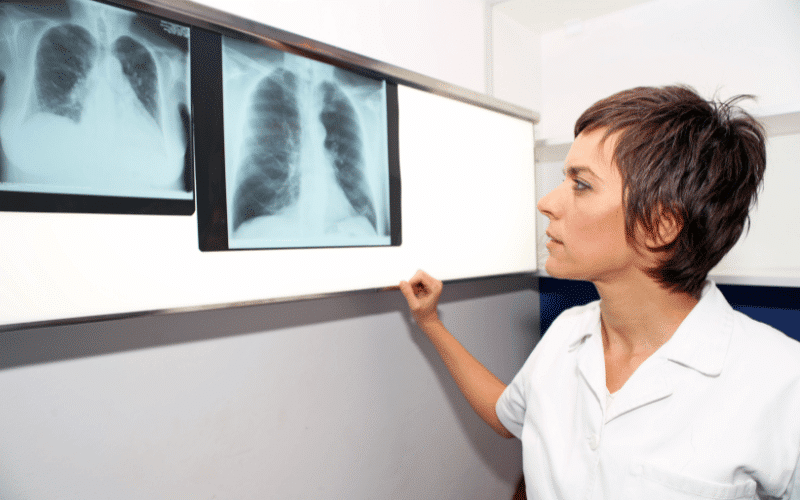Disease 8: Pulmonary Embolism

A pulmonary embolism (PE) is a life-threatening condition that occurs when a blood clot, usually originating from a deep vein thrombosis, travels to the lungs and blocks one or more pulmonary arteries. This can severely impact the lungs’ ability to supply oxygen to the body and put significant strain on the heart.
Risk factors for PE include those for DVT, as well as a history of previous PE or DVT, heart disease, and certain genetic clotting disorders. Symptoms of a PE may include sudden shortness of breath, chest pain, coughing up blood, rapid heart rate, and lightheadedness or fainting.
Treatment for PE usually involves anticoagulant medications to prevent further clot formation and may include thrombolytic therapy or surgical intervention in severe cases to remove the clot and restore blood flow to the lungs. (8)